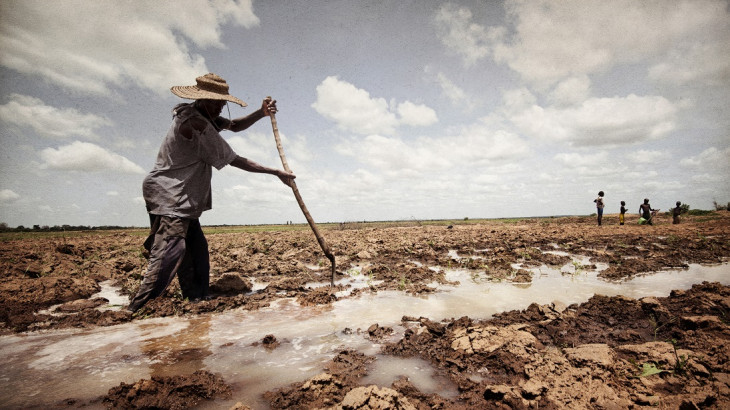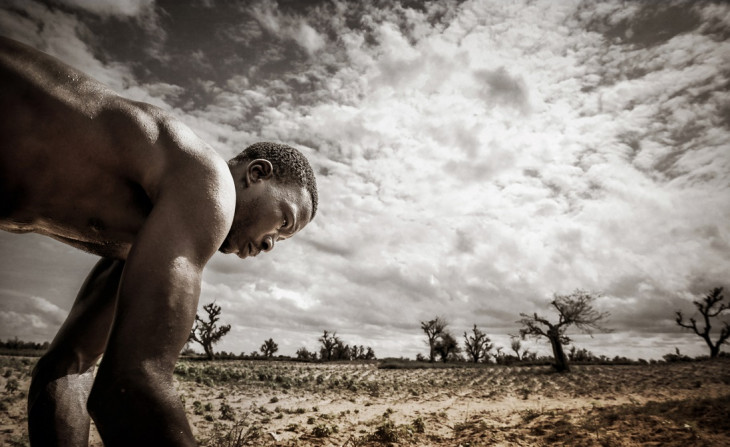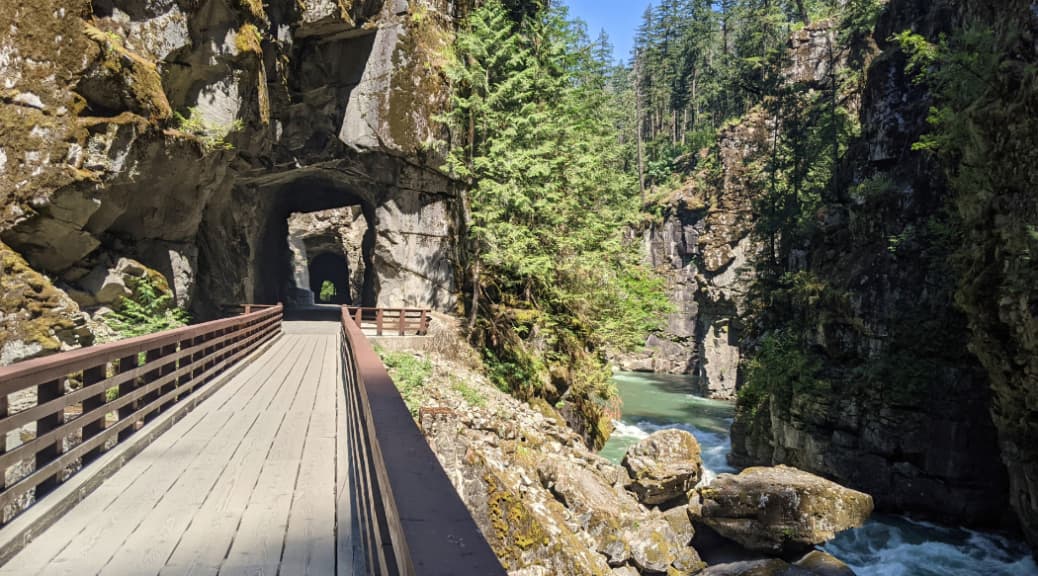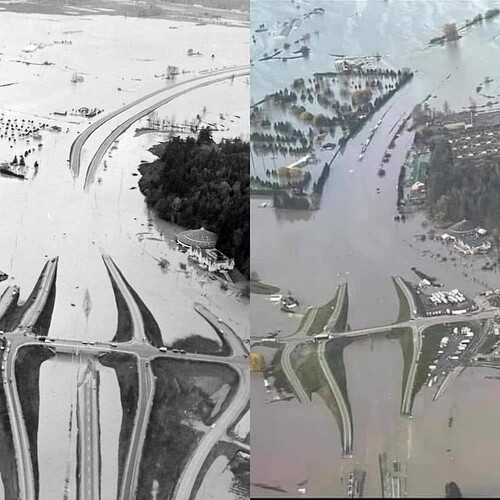Just stop. For the love of God, whoever, please just stop
Depressing isn’t it… it’s like watching a train derail on a bridge, fall from it, and crash in slow-motion.

I temper any anger by convincing myself the deforestation is in part to turn the land into agricultural use to grow cheaper crops because there are still millions in the country below the poverty line…
Stop worrying, you can breath money.
my only wish is that the have a reforestation plan in place, where seedlings are planted immediately after clearing the land
but in the case of clear-cutting for the purpose of ranching, I just don’t see that happening.
Unfortunately that’s not the case, not long term anyway. The top soil is shallow and has limited nutrients over a period of time,especially if it washes away.
It’s just not sustainable in any shape or form other than the natural forest.
Nah, it is for beef farming, the stuff they deforested 20 years ago no longer can support those cows. Same ranchers.
that’s when they should be re-planting trees. the amount of manure in those areas after the cattle graze should be enough to reforesting. trouble is, where do you get the seedlings from? what trees do you plant? who is responsible for the cost?
pretty simple job creation for many to be trying to fix this. they’ve been doing it for decades here when they have logged the temperate rainforests.
Different problem set than in BC. In BC, left to its own devices the forest will eventually restore itself. Reforestation is aimed at helping it along and moving into the early mature part of the forest cycle, which in BC is fairly close to a steady state. No matter what, those clouds going up and over the Coast range are going to drop a tonne of moisture. The only real fear is loss of soil due to excessive run-off.
In Brazil, once the area is clear cut, it no longer supports trees. Without the canopy, the terrain has an alternative steady state outcome, which is a fairly dry savannah. That is starting to hit even areas which have not been cleared yet, because the ‘micro-clime’ (not that micro, it was once huge areas) that keeps water in the region is disappearing. With the loss of moisture, the soil capacity collapses. Right now, for large chunks of the Amazonian rainforest, it is just hanging on, and is actually in a drought state. Annual rainfall is more characteristic of savannah than it is of rainforest. Hence the huge fires.
we also have huge fires, and huge boreal forests on the lee side of the mountains which don’t get a lot of rain.
the 100+ years of massive clearcutting has had effects here as well. reforestation has only been around for the past 30-40 years. But like we acknowledged, here it’s for a different reason. in BC, we log for building materials with softwoods like pine, spruce, fir. the trees grow quickly. in the Amazon, it’s hardwoods which grow much slower and once they clear a field they use it for cattle ranching until the soil is ruined.
Oh, very definitely - the devastation from the flooding is substantially attributable to the poor state of the forests, although that is not truly a failure of forestry/reforestation, as much of that is a knock-on effect of the mountain pine beetle and a couple of other similar pest outbreaks. My point was simply that most forestry observers think that BC forests can restore themselves given enough time, whereas most think that Amazonia just can’t.
no question, but the flooding is of no consequence of the forestry situation. much more towards overall greenhouse effect. but note, that there was a very similar flood is 1990. Records of weather patterns have only been kept here for a little over a century, unsure if there’s a repeat before this. But the Sumas floodplain (where I fish, interestingly enough) was actually just restoring itself back to where it was before the growth of the west started messing with things. Alouette and Stave Rivers were dammed for hydroelectric energy, the Fraser Canyon has had significant modifications to it.
However, the Othello tunnels are the most significant piece of man’s influence on the area that has been wiped out by the force of mother nature. I was just there last year doing a walkthrough and the water level was 20-30ft lower through that canyon than it was during the flood. incredible scenes.
before
after
Jeez, that river…I have only ever seen that river once, looking a lot more like the still photo.
yeah it’s a bit fucked. they drained the lake for the very fertile floodplain soil 100 years ago to grow corn (now cranberry and blueberry farms with massive estates on them). there was a flood in 1990 and again in 2021. See the side by side here. that’s the Trans-Canada Highway there which was closed.
when man takes on nature and loses, nature will reset. I was in Mexico during all this. This is why I live up on a hill because i’m surrounded by floodplain in three directions.
An appropriate article for these uncertain times, although it dates from 2020:
Seven things you need to know about climate change and conflict
09 JULY 2020

Countries enduring conflict are less able to cope with climate change because their ability to adapt is weakened by conflict. Samuel TURPIN / Humans & Climate Change Stories
A new ICRC report, When rain turns to dust, explores how countries enduring conflict are disproportionately affected by climate change and climate variability.*
Here are seven things you need to know:
1. Of the 25 countries deemed most vulnerable to climate change, 14 are mired in conflict
The Notre Dame Global Adaptation Initiative (ND-Gain) Index looks at a country’s vulnerability to climate change and other global challenges, set against its ability to improve resilience. Yemen, Mali, Afghanistan, Democratic Republic of the Congo and Somalia, all of which are dealing with conflict, are among the lowest ranked.
This is not to say that there is a direct correlation between climate change and conflict. Rather, it suggests that countries enduring conflict are less able to cope with climate change, precisely because their ability to adapt is weakened by conflict.
People living in conflict zones are therefore among the most vulnerable to the climate crisis and most neglected by climate action.
2. Climate change does not directly cause conflict, but…
Scientists generally agree that climate change does not directly cause armed conflict, but that it may indirectly increase the risk of conflict by exacerbating existing social, economic and environmental factors.
For example, when cattle herders and agricultural farmers are pushed to share diminishing resources due to a changing climate, this can stir tensions in places that lack strong governance and inclusive institutions.
3. Insecurity limits people’s ability to cope with climate shocks
The following case study from Mali, which has seen years of conflict, illustrates this point.
West Africa was hit by a long drought in the 1970s that led to famine. Isa, a community leader from northern Mali, said, “At that time, we only had to search for food. We could move freely with our animals. Now, we can’t even search for food. We are forced to stay in place or move to cities because of the insecurity.”
In early 2019, grazing land became scarce south of Gao, due to floods. Pastoralists were worried about travelling with their livestock for fear of being attacked by armed groups or bandits. Instead, they often gathered in areas close to water sources, creating tensions with farmers and fishermen. As their animals became weaker, herders were forced to sell them at discounted prices.
Insecurity prevented them from reaching livestock markets further afield, where they could have hoped for better prices. State officials – and potential state support – were absent because of the violence. Violence also considerably limited humanitarian access.
In short, impoverished herders watched their only assets wither and were left struggling to feed their families.

People living in conflict zones are among the most vulnerable to the climate crisis and most neglected by climate action. Samuel TURPIN / Humans & Climate Change Stories
4. Adapting to climate change can be relatively simple, but it tends to be complicated
In certain circumstances, a change in the crops being cultivated might be sufficient. But adapting to climate change may also require major social, cultural or economic changes. A whole agricultural system might need to change, or diseases new to a geographical area might need to be dealt with.
Concerted efforts to adapt tend to be limited in times of war. In a conflict situation, authorities and institutions are not only weak, but also preoccupied with security priorities.
5. The natural environment is frequently a casualty of conflict
Too often, the natural environment is directly attacked or damaged by warfare. Attacks can lead to water, soil and land contamination, or release pollutants into the air. Explosive remnants of war can contaminate soil and water sources, and harm wildlife. Such environmental degradation** reduces people’s resilience and ability to adapt to climate change.
The indirect effects of conflict can also result in further environmental degradation, for example: authorities are less able to manage and protect the environment; large-scale displacement places strain on resources; natural resources can be exploited to sustain war economies. In Fao, south of Basra, Iraq, people blame their water and farming problems on the felling of date palms for military purposes during the Iran-Iraq war.
Conflict can also contribute to climate change. For example, the destruction of large areas of forest, or damage to infrastructure such as oil installations or big industrial facilities, can have detrimental climate consequences, including the release of large volumes of greenhouse gases into the air.
6. International humanitarian law (IHL) provides protection to the natural environment
As early as 1977, states afforded the natural environment protection against widespread, long-term and severe damage through Additional Protocol I to the Geneva Conventions.
Watch explainer on the laws of war and nature:
Greater respect for the rules of war can reduce the harm and risks that conflict-affected communities are exposed to as a result of climate change.
For example, climate change can drive water scarcity and reduce the availability of arable land. By prohibiting attacks on objects indispensable to the survival of the civilian population, such as agricultural areas and drinking water, IHL protects these resources from additional conflict-related violence.
7. Humanitarian action must adapt
The climate crisis is altering the nature and severity of humanitarian crises. Humanitarian organizations are already struggling to respond and will not be able to meet exponentially growing needs resulting from unmitigated climate change.
Major efforts – in the form of significant systemic and structural changes, political will, good governance, investment, technical knowledge, a shift in mindsets – are needed to limit climate change.
Humanitarian organizations must collaborate to strengthen climate action. While people in conflict zones are among the most vulnerable to climate change, there is a gap in funding for climate action between stable and fragile countries. A greater share of climate finance needs to be allocated to places affected by conflict to help communities adapt to climate change.
*Climate change refers to any change in the climate that persists for an extended period – typically, decades or longer. Climate variability refers to fluctuations in climatic conditions within a smaller time frame, such as a month, a season or a year. Variations, such as the frequency or intensity of rainfall, tropical cyclones, temperatures, etc., can be exceptional and part of natural climate variability. Persistent variations may suggest a potential change in the climate.
*** Environmental degradation is a process through which the natural environment is compromised. This can be an entirely natural process, or it can be accelerated or caused by human activities.*
Don’t know if I’m in the right thread, but it’s 3am and the tornado sirens are going off here. Bad storms, but sirens woke us up. Tornado spotted just east of here and moving west at a high speed. Family all went down to the basement to wait it out. In about 15 minutes the danger will have passed.
I was talking to my dad back in England the other day and his shed had blown over in the storms. He said, “All you needed was the ruby slippers sticking out from underneath.”
Here in Indiana tonight it’s real! With sleep in my eyes I am relieved our win against West Ham wasn’t a dream.
March?!? I assume you are in the tornado belt, but March is really not the season.
Yep, strange times, March not usually the season. I’m at the top of the tornado belt, Indianapolis area, usually they are a bit further south.
We are all fine, not sure how much damage was done, house is fine, stuff blew around - garden furniture, that sort of thing, but it doesn’t seem so bad at all.

